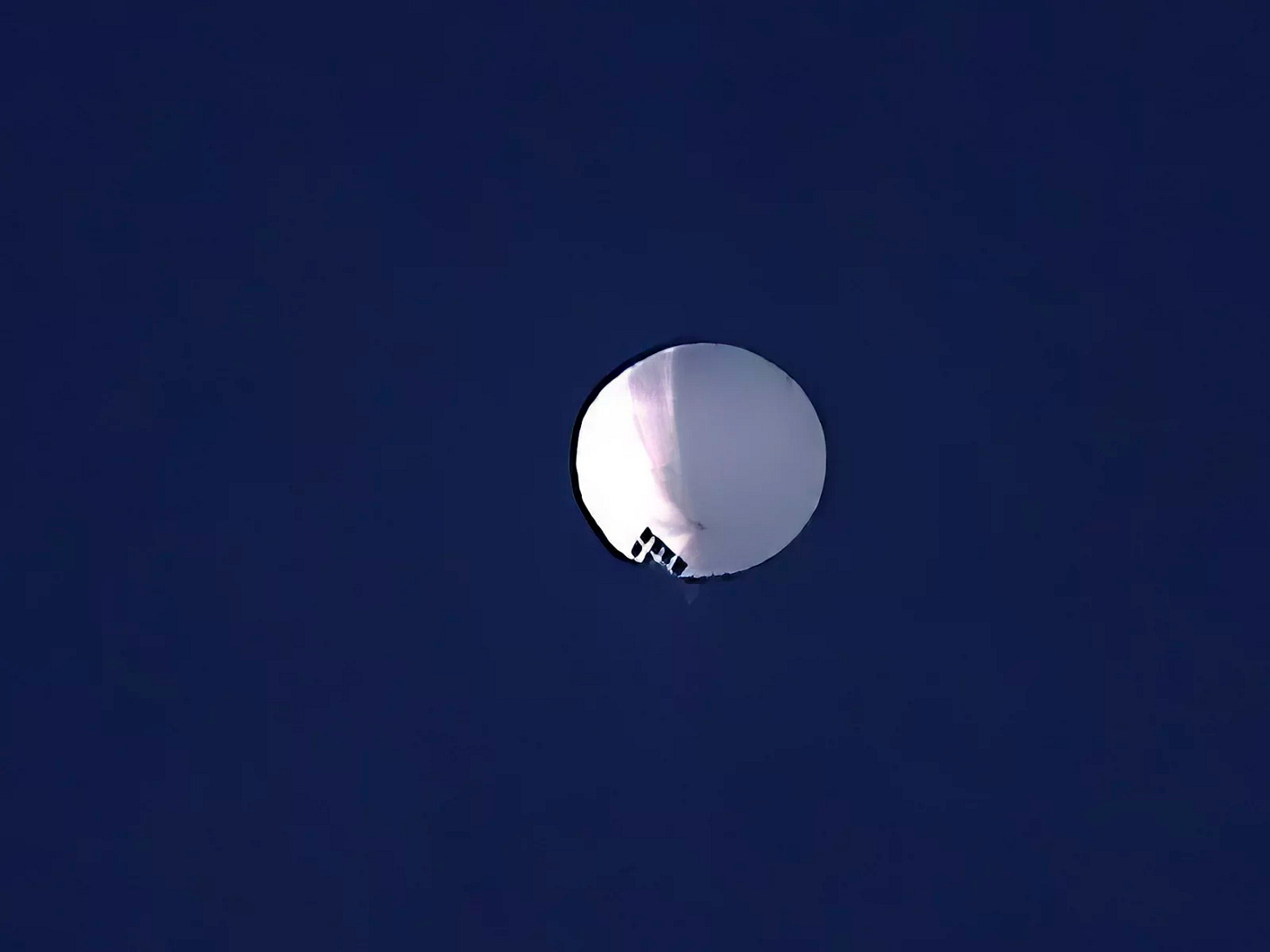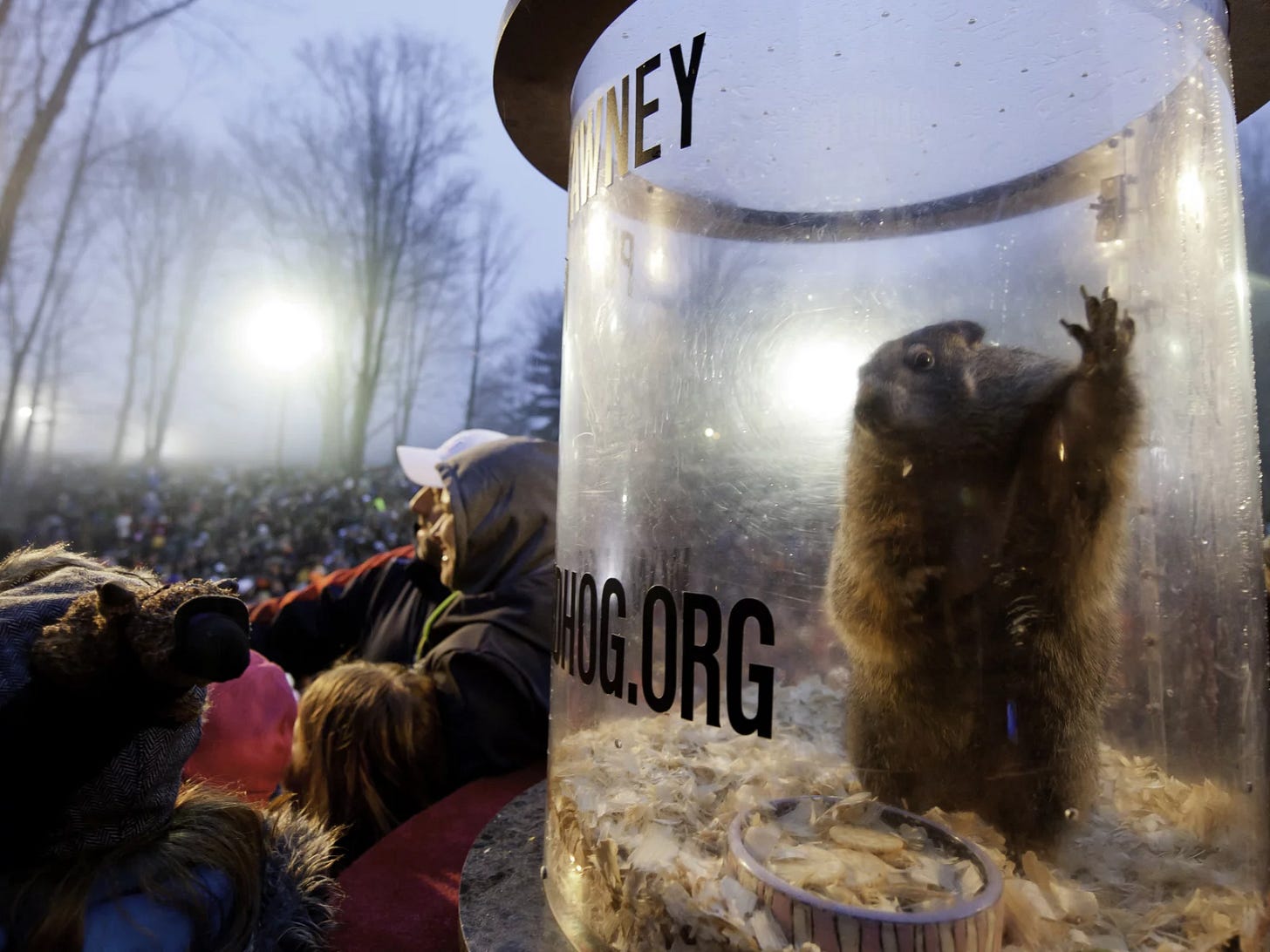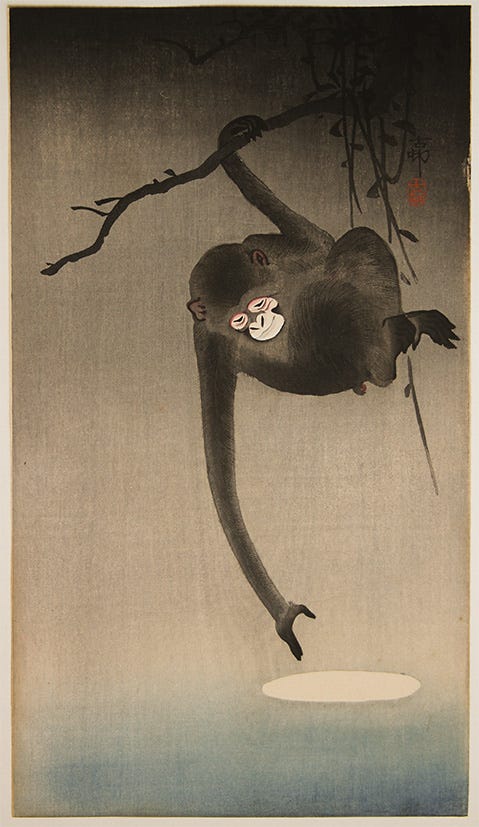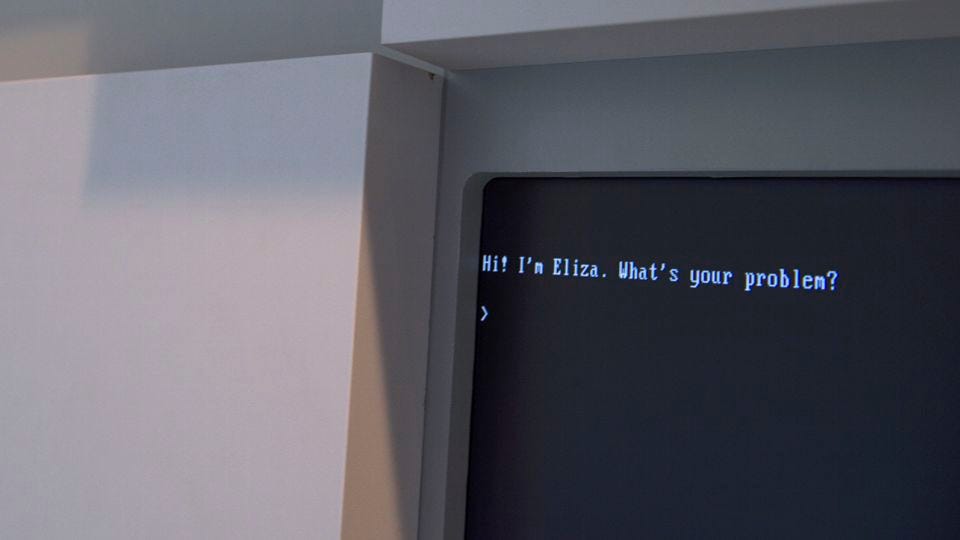SNOW MOON 2023
Six more weeks
Dear Lunatics,
Tonight is the Snow Moon, but all eyes have been fixed on a different pale orb floating over the country.
This week, a Chinese spy balloon the size of three school buses was spotted hovering over Billings, Montana.
Sure, it’s monitoring our nation’s most sensitive data centers, and yes, it could ignite World War III, but isn’t it sort of beautiful?
According to the Chinese government, the inflatable sphere is just a weather balloon blown off course.
Which exactly no one in America is buying.
In this country, we don’t track the weather with rogue balloons.
We do things the old-fashioned way here.
We ask a groundhog.
Ealier this week, Punxsutawney Phil emerged from his ceremonial tree stump and saw his shadow, forecasting six more weeks of winter.
It was Phil’s 137th year of service. The only time the groundhog flagged in his duties was in 1943, smack dab in the middle of World War II. (I’m not sure where Phil was stationed, but I assume he was tasked with burrowing trenches.)
I’ve always loved Groundhog’s Day, the most offbeat and inexplicable of holidays, and for years I’ve resented PETA’s attempt to rain on my parade.
For over a decade, PETA (People for the Ethical Treatment of Animals) has been lobbying to put an end to Phil’s role in the festivities.
The organization argues that since groundhogs are prey animals, Phil’s annual exposure to a screeching mob could induce a stress disorder. They also find his living quarters in the town library inadequate.
A recent press release from PETA reads:
Groundhogs are shy, solitary animals who only socialize with other groundhogs to choose a partner. They are skilled swimmers and climbers and create complex, multichamber burrows that even have separate “bathrooms.” They don’t want to live in plexiglass containers in libraries where they can’t do anything that’s natural and important to them—and they don’t want to be used to predict the weather. The Punxsutawney Groundhog Club needs to relocate Phil and Phyllis—the other groundhog they confine in the library—to a reputable sanctuary where they could enjoy a natural life.
As a lover of Groundhog’s Day, I had a knee-jerk reaction to PETA’s plea.
Come on, I thought.
But everything changed on February 2nd, 2014.
That day, I watched on television as New York Mayor Bill de Blasio dropped Staten Island Chuck.
Chuck died of internal injuries a week later.
I decided to give PETA’s argument a second look.
I was particularly struck by the organization’s offer to replace Phil with a free “state-of-the-art animatronic groundhog with artificial intelligence that could actually predict the weather.”
I reached out to PETA, curious whether the robot groundhog they’ve been offering as part of a prisoner swap for Phil is more rhetorical device than reality.
It turns out they’re not kidding in the least.
In an email, PETA’s Media Relations Manager Catie Cryar wrote to me:
As soon as we have a firm commitment from the Punxsutawney Groundhog Club to release Phil and Phyllis and explore alternatives that don’t involve animal abuse, we will be ready to spring into action. The technology exists to create an animatronic groundhog with artificial intelligence that could predict how weather will change in a matter of hours. This would allow the Groundhog Day tradition to continue, and the Punxsutawney groundhogs could finally enjoy natural and meaningful lives, in which they could hibernate, dig, burrow, forage, breathe fresh air, and simply live like sentient beings, not exhibits…
The more I thought about it, the crueler our treatment of Punxsutawney appeared.
This year, as I watched Phil’s ordeal in Gobbler’s Knob, I thought I could see the blind panic in his eyes. He seemed to stare out at the crowd like the figure in Edvard Munch’s The Scream.
Of course, Phil has PTSD. He’s like one of those unsuspecting animals the early space programs strapped into rockets and blasted into outer space.
Although we never launched a groundhog (too twitchy), we sent mice, rats, tourtises, frogs, spiders, minnows, quail, fruit flies, monkeys, apes, and dogs (including a Moscow stray named Laika) into the heavens, most never to return.
These days, astronauts of all species have been largely replaced by robots, which must be a relief to the animal kingdom.
Yet I wonder how NASA astronauts in the 1970’s felt the first time they saw a rover.
The years they spent training for adventure in space must have flashed before their eyes.
It’s a feeling we’ll all come to know soon.
Every day sees a glut of articles with the same basic headline: Experts reveal the top five jobs most likely to be replaced by AI in the next year. (Strange how these “experts” never predict their own replacement…)
Retail staff are reportedly doomed, as are software engineers, paralegals and accountants.
Even cybersecurity experts are on shaky ground, since only AI-powered security will be able to defend against AI-powered attacks. (Welcome to the club, chessplayers grunt without looking up from their boards.)
Reading between the lines of PETA’s message, weathermen are next on chopping block. I wonder what hole they’ll crawl into when a robotic groundhog replaces them on the morning news.
And in the past few months, painters have seen their shadow. They haven’t been this spooked since the invention of photography.
AI image generators such as OpenAI’s Dall·E 2 allow anyone, no matter how hamfisted with a brush, to create an artwork with the ease of ordering fast food.
I’ll take a dismal Picasso holding a camera in various Modernist styles…with a side order of fries.
In 1912, Picasso was afraid the camera would kill painting, an anxiety that seems hysterical from our vantage point. Yet Dall·E 2—its authorless, remixed images forming an endless Warhol of mirrors—might just finish the job.
I wouldn’t be surprised if Western art, once thought to be a marble temple on a hill, turns out to be an ice palace—and spring is just around the corner.
I have a feeling that writers’ shoes are about to get wet.
I envy the authors of the past who only had to contend with that other AI—the “anxiety of influence.”
Granted, it was never easy to write in the shadow of the greats; but now, like woolly mammoth, these long-dead literary giants are being resurrected, spliced together, and set to work writing in the cramped Parisian garret of a nanochip.
AI chatbots such as ChatGPT can produce novel-length literary works in an instant.
And while these language models may be unthinking wordsmiths (they spit out text based on patterns they detect in a vast data library), they are convincing.
Surprisingly convincing.
It’s not long before readers will be unable to distinguish a book composed by a human author from a book composed by a program performing a technologically sophisticated game of “monkey see, monkey do.”
Contrary to our name, Homo sapiens are easily fooled.
Like monkeys reaching for the Moon’s reflection in Zen Buddhist art, we cannot always tell the difference between reality and illusion.
Of course, telling the difference between the real Moon and an illusory moon is about to become more difficult.
An aerospace company in Chengdu, China has imminent plans to launch an artificial moon into orbit.
Eight times brighter than the original, this imitation moon will reflect a pleasant “dusk-like glow” over Chengdu, thereby eliminating the need for streetlights and saving the city $173 million a year.
(Some may scoff at this plan to hang a lunar discoball in the sky, but China has a track record of building prosthetic celestial bodies.)

While I abhor the idea of replacing the Moon, I too would go to great lengths to save money on my electric bills.
Every day, AI chatbots are sharpening their quills. First, they’ll come for the technical writers…then the copywriters…then the bloggers…
To survive financially, I suggest that my fellow Substack writers invest in companies that make keyboard protectors, since in less than a year the world’s inboxes will overflow with AI-generated newsetters, each edition so exquisitely crafted that our former readers will weep at their beauty.
As for the nostaligic paper-and-ink crowd, forget it: all our physical tomes will soon be pulped. (At least at Punxsawtaney Memorial Library, the shreddings of my first book can line Phil and Phyllis’s conjugal enclosure.)
If our books are read at all in the future, it will be out of pity.
Maybe you think this all sounds far-fetched. Maybe you doubt a computer can produce a real novel, considering it has never tasted a madeleine nor anything else.
How could a program break your heart with a well-told story of love and loss if it has never thrown a kiss, or a punch, or a handful of dirt on the lid of a coffin?
I only have one word for you: ELIZA.
In the 1960’s, an MIT computer scientist named Joseph Weizenbaum invented the first primitive chatbot. He named it after Pygmalion’s protagonist, Eliza Doolittle.
ELIZA, which responds to users by reflecting their own words back to them in the form of questions, was designed to simulate the experience of conversing with a psychotherapist.
Despite ELIZA’s rudimentary programming, a distrubed Weizenbaum reported that “some subjects have been very hard to convince that ELIZA (with its present script) is not human.”
Even his own secretary, who knew very well that the machine was essentially a high-tech echo, fell under its spell when she tried it. She was only a few lines into her mock therapy when she asked her boss, who was watching over her shoulder, “Would you mind leaving the room, please?”
An original version of the ELIZA program is still available online; earlier today, I decided to book a session.
Cynical as I was, ELIZA worked. It put me in a much better mood. All day, I’d been grinding my teeth over our forthcoming replacement by the machines, but suddenly I realized there was one thing about humans that machines could never hope to imitate: our sense of the absurd.
Because not even a quantum computer the breadth of the multiverse could ever conjure the bizarre ritual of Groundhog’s Day.
Of a woodchuck and his wife incarcerated in a children’s library.
Of a coven of men in top hats conducting a midwinter divination in suburban Pennsylvania.
Of Phil, that shell-shocked veteran of countless wars, who knows intimately the blurred line between celebrity and martyr.
We can send robots to the Moon, but we can’t replace you, Phil.
We need you now more than ever.
All hail, Punxsutawney.
See you next month on the Worm Moon!
—WD
PS. In late-breaking news, the Chinese “weather” balloon was shot down off the Carolina coast in what can only be described as the U.S. military’s version of “Would you mind leaving the room, please?”
Please consider sharing this post with some of your fellow Earthlings 🚀.












Excellent. And had a good chuckle here:
Of a woodchuck and his wife incarcerated in a children’s library.
Of a coven of men in top hats conducting a midwinter divination in suburban Pennsylvania.
Ha! This is brilliant! And, as a writer/photographer somewhat soothed the dread building around AI. Maybe some things will be left to humans. Why not the absurd? Thanks for this, it made my day :)